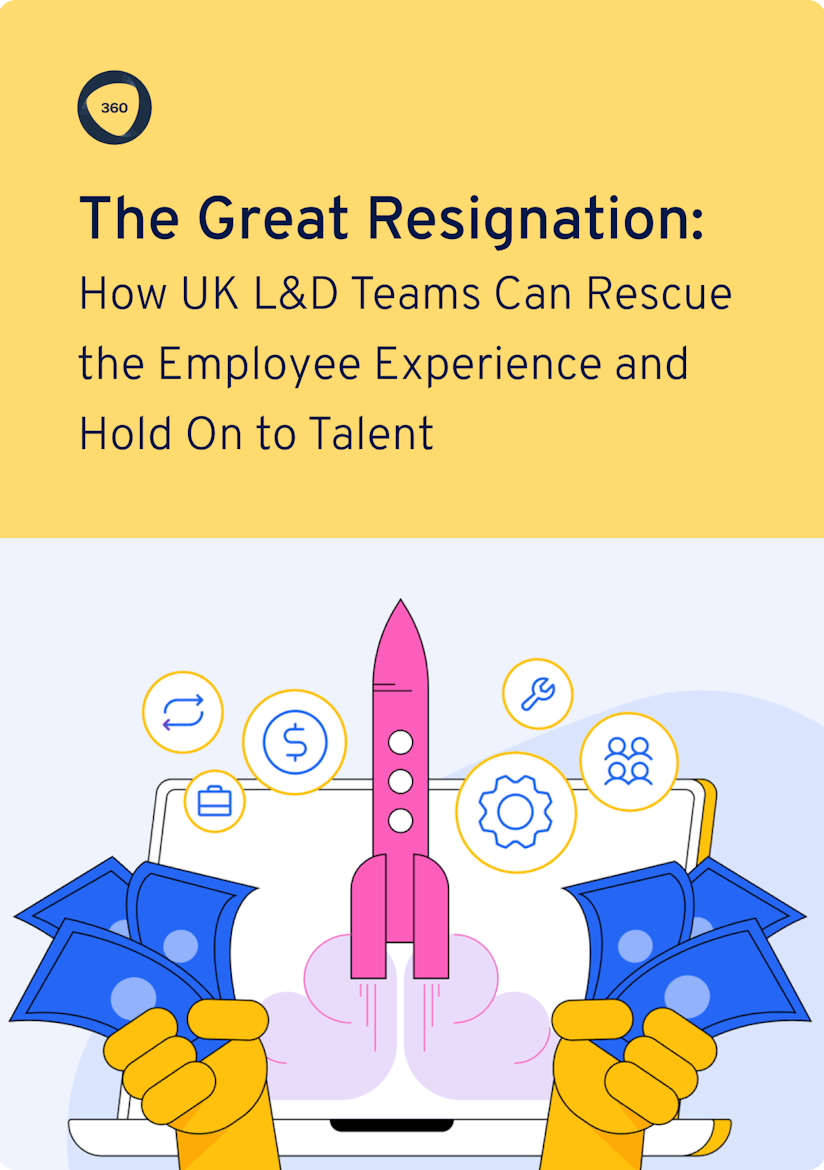
UK L&D: Why You Need a Learning and Development Plan to Retain Your Top Talent (And How to Get Started)
Upskilling employees through a learning and development plan leads to faster growth and yields higher profits in about 75% of cases. Plus, it helps employees feel valued and confident.
Yet, almost every UK worker today needs to be upskilled or reskilled, suggesting employers aren’t giving skills development enough focus. In fact, 94% of UK workers lack the skills they will need in 2030 to perform their jobs well. Organisations recognise the need to develop their employees, but without a learning and development plan in place, the efforts tend to be ad hoc and aren’t as effective.
To keep your best employees from stagnating and feeling disengaged, you need a formalised learning and development plan. With a clear structure in place, you’ll keep your superstar team members longer, and they’ll be more engaged, more productive, and more confident in their work. In this article, we delve into why a learning and development plan is critical to employee retention and explain what you can do to ensure the success of your plan.
Attract top talent that wants to stick with your company
UK employers are facing a record shortage of qualified job candidates. And even when you can find talented prospects, it’s an enormous expense with salaries, interviewing, onboarding, and training costs—and that’s if they stay with your company. In the UK, the cost of a single employee leaving is £30,614, and according to one survey, 31% of new hires have quit within the first six months and 68% of those left within the first three months. A learning and development plan that includes on-the-job training and mentorship helps reign in these costs by making new hires feel supported and valued.
A clearly defined L&D plan also assures your current and prospective employees that you care about their career development, which is crucial to attracting and retaining the 76% of Gen Z employees who believe that learning helps them build a successful career, as well as over half of millennials and Gen X, who think similarly. It’s evident that competitive salaries and free coffee aren’t enough to entice the new generation of workers.
What will set employers apart is how well they are able to attract and retain new hires with a clear and appealing learning and development programme.
Related: These are the 4 Employee Engagement Strategies UK L&D Leaders Need Right now
75% of Gen Z employees believe learning helps them build a successful career.
Engage existing employees with new learning opportunities
Your existing employees are your greatest asset. After all, you worked hard to scout, hire, and train them. A learning and development plan can engage your current workforce with new learning opportunities in the form of workshops, webinars, skill-sharing, and collaboration.
The Great Resignation in the UK has demonstrated that people have reset their priorities to seek employers who value them and provide professional development opportunities. Our own survey of 784 Brits revealed that employees want more fulfillment from their work and continuous training programmes to grow.
This is great news for organisations because your existing employees are a repository of knowledge and competencies that they have gained from past learning experiences. They just need to feel empowered to share this knowledge by creating courses, providing inputs on existing training, and driving innovation.
Your learning and development plan can play a pivotal role here. Use a collaborative learning platform and set up OKRs (Objectives and Key Results) that facilitate collaborative learning so that teams are learning from each other. Mentoring relationships are born out of such interactions, and both the teacher and learner excel when both parties are engaged.
This type of personalised learning and development plan has a deep impact on an employee’s sense of fulfillment and engagement because they feel recognised and motivated to stick around at the company.
Learn more about what's driving the Great Resignation in the UK and how to overcome the challenges it presents in our ebook: The Great Resignation: How UK L&D Teams Can Rescue the Employee Experience and Hold on to Talent

Download your free report
By providing your contact info, you agree to receive communications from 360Learning. You can opt-out at any time. For details, refer to our Privacy Policy.
Create a succession plan that continually develops new leaders
Having a robust learning and development plan in place means you’ve secured your future leaders. It’s like succession planning on automation because you’re continually developing people to be future-ready.
Leaders developed internally are likely to be more successful because they already have experience with day-to-day operations, are familiar with company culture, and would have interacted with leaders in similar roles. This makes for a sound development strategy for your business too.
Studies have shown that succession planning and internal mobility significantly boost job satisfaction and retention. A learning and development plan gives you a clear picture of skill sets and skills gaps. Fill these, and employees are more satisfied, confident, and productive because they can easily identify their own areas for improvement and work towards those goals.
Facilitate collaboration and team building among employees
With remote work and digital transformation, collaboration between teams is more important than ever. A learning and development plan can help bridge these gaps by encouraging peer training and knowledge sharing.
One survey of 3,000 remote workers in the UK found that 67% feel disconnected from their colleagues and 42% feel lonely. A huge part of this isolation comes from learning in a vacuum—passively receiving employee training from behind a screen. With little interaction and no scope to ask questions or to deepen their learning through application, your employees retain even less of the information. Especially when you consider that learners forget 50–80% of new information by the next day unless they think or read about it again.
A learning and development plan that encourages peers to ask questions about existing training, request new online courses, and engage in discussion forums facilitates active learning, which means that they are quickly applying what they learned. This creates higher engagement in learning, brings teams together, and promotes collaboration.
When employees feel connected and supported in their learning and development, it creates a sense of belonging to the company and its people. This sense of belonging is crucial to retention.
Related: Your Employee Retention Management Plan Imploded in 2021. Here’s how to get it Back on Track
Use technology to execute your learning and development plan
Building and executing a solid learning and development plan doesn’t have to keep you up at night. With a learning management system (LMS), you can easily create, iterate, and ship training that is in line with the components of your learning and development plan for each team member. When it comes to purchasing an LMS, it can be hard to decipher which system will best suit your unique needs. Here’s a handy checklist that goes through the different scenarios you can apply to choose the right LMS for your organisation.

